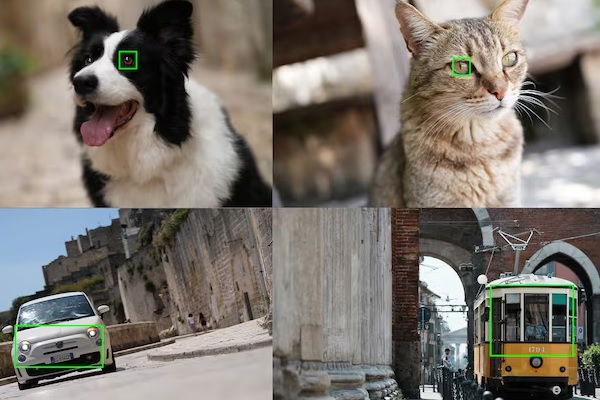Sony α7CR 61.0 MP Compact Full-Frame (ILCE-7CR/B)
◼ 61.0MP full-frame back-illuminated Exmor R CMOS sensor
◼ Advanced BIONZ XR engine boosts overall processing speed by up to 8x
◼ The latest AI processing unit
◼ Next-generation AF with advanced subject recognition
◼ Outstanding 4K movie recording up to 60p/50p


Full-frame 61.0-megapixel Exmor RTM image sensor.
The back-illuminated sensor's noise reduction, gapless on-chip lenses, anti-reflection optical coating, elimination of the optical low-pass filter that is usually positioned in front of the sensor and other original technologies deliver high resolution, high sensitivity, low noise, and wide dynamic range.


BIONZ XRTM image processing engine.
The latest BIONZ XR image processing engine minimises processing latency while boosting movie and still image processing power, delivering natural gradations, realistic colour, low noise, superior image quality and fast menu response.


High sensitivity and high dynamic range with low noise.
Advanced imaging technology allows sensitivity settings from ISO 100 to ISO 32000 for stills and movies. Dynamic range at lower sensitivities is a wide 15 stops for smooth, realistic gradations from deep shadows to highlights.


Consistently accurate exposure and colour reproduction.
The advanced AI processing unit achieves accurate white balance even where the subject is in shade. Skin tones, foliage and other materials are reproduced with natural colors under almost any lighting, with lifelike gradations such as highlight roll-off in portraits.


Advanced optical 5-axis image stabilisation.
A high-precision image stabilisation unit, advanced gyro sensors, and optimised image stabilisation algorithms effectively detect and correct camera shake, providing a huge 7.0-step advantage for handheld shooting.
[1] Yaw [2] Roll [3] Pitch.


Pixel Shift Multi Shooting responds to changing conditions.
Pixel Shift Multi Shooting uses the precision in-body image stabilisation system to capture multiple pixel-shifted images that are later composited on a PC to achieve overwhelming resolution in a single image. 16-image composites with approximately 240.8 million pixels (19008 x 12672 pixels) can be produced from data that is equivalent to approximately 963.2 million pixels.


Recognition of a wider range of subjects.
The AI processing unit supports recognition of more subject types including the eyes of an even wider range of grazing and small animals and birds. A new combined Animal/Bird setting eliminates switching. The whole or the leading end of Cars/Trains and Airplanes, and the heads of Insects, are also recognised.


AI processing unit for advanced subject recognition.
The AI processing unit supports recognition of human subjects using learned human form and pose data, and also recognition of non-human subjects such as animals, insects, and vehicles. This improves the performance of Real-time Recognition AF and Real-time Tracking, and makes Fast Hybrid AF subject acquisition and tracking more precise and reliable over a wider area.
| Insured Product | No | ||||||||||||||||||||||||||
|---|---|---|---|---|---|---|---|---|---|---|---|---|---|---|---|---|---|---|---|---|---|---|---|---|---|---|---|
| Specifications |
|
-
 GODOX SK400 2 HEADS STUDIO KIT + 2 Light Stand (SK400IIV-KIT)SAR 1,399.00 Regular Price SAR 1,873.00
GODOX SK400 2 HEADS STUDIO KIT + 2 Light Stand (SK400IIV-KIT)SAR 1,399.00 Regular Price SAR 1,873.00 -
 BOYA BY-WM6S UHF Wireless Microphone System (BY-WM6S)Special Price SAR 399.00 Regular Price SAR 800.00
BOYA BY-WM6S UHF Wireless Microphone System (BY-WM6S)Special Price SAR 399.00 Regular Price SAR 800.00 -

-
 Boya USB Microphone (BY-PM700)Special Price SAR 225.00 Regular Price SAR 450.00
Boya USB Microphone (BY-PM700)Special Price SAR 225.00 Regular Price SAR 450.00 -
 Boya BY-M100 Mininature Condenser Microphone (BY-M100)Special Price SAR 120.00 Regular Price SAR 150.00
Boya BY-M100 Mininature Condenser Microphone (BY-M100)Special Price SAR 120.00 Regular Price SAR 150.00 -
 Boya BY-M100D Mininature Condenser Microphone (BY-M100D)Special Price SAR 88.00 Regular Price SAR 175.00
Boya BY-M100D Mininature Condenser Microphone (BY-M100D)Special Price SAR 88.00 Regular Price SAR 175.00

































